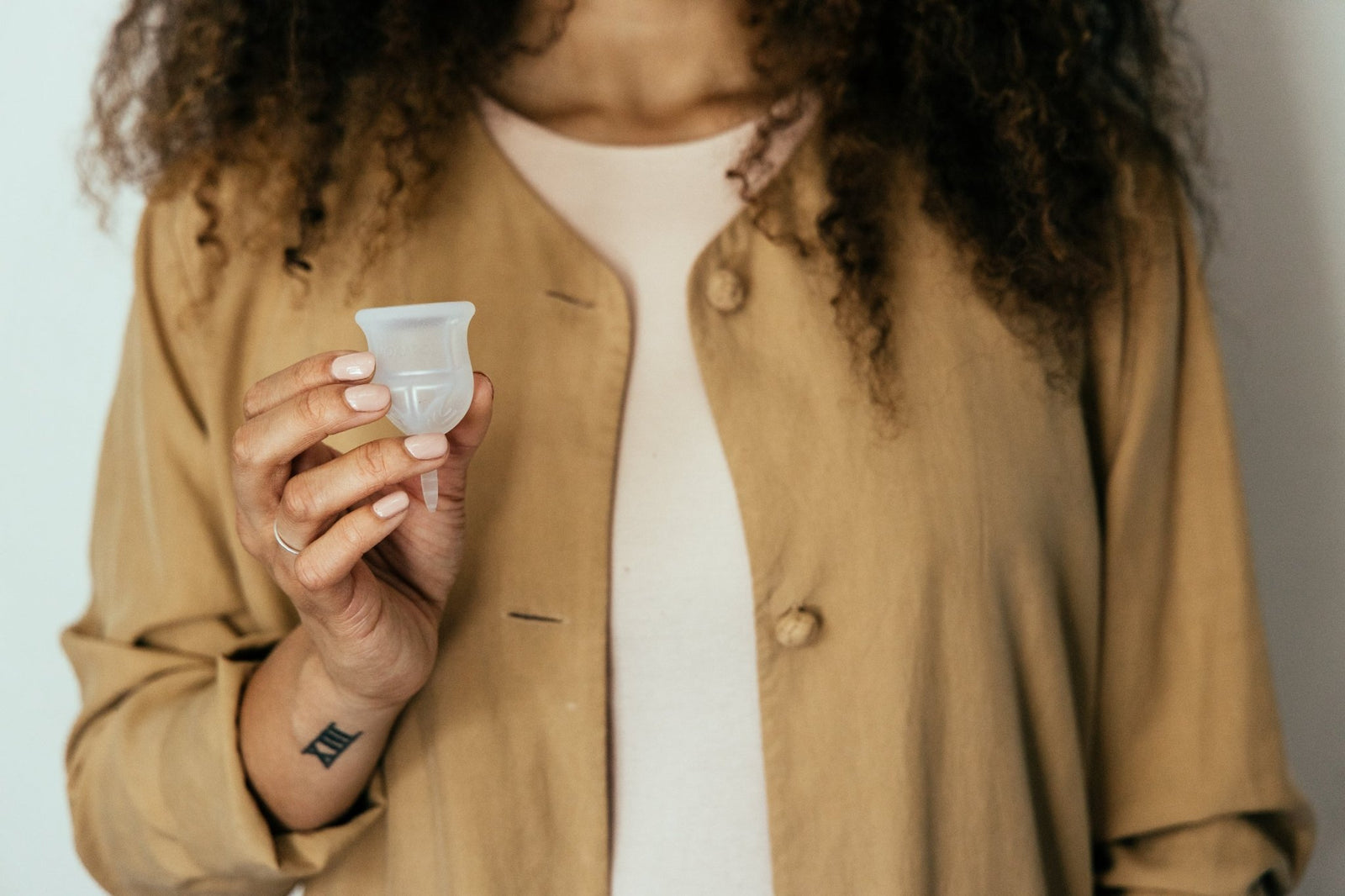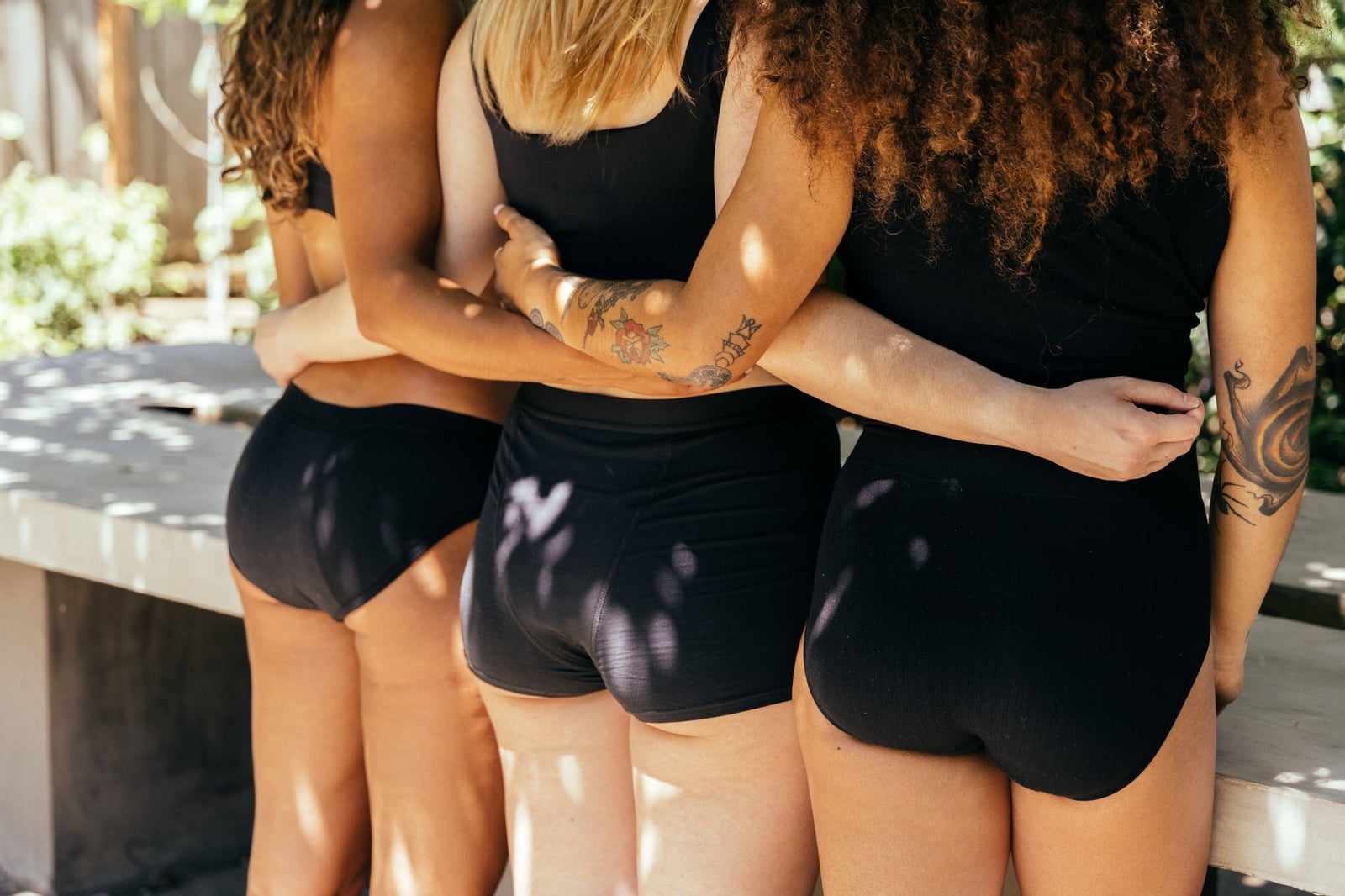While the historically taboo topic of periods, in general, is laden with stigma, talking about it is the first step to normalizing a natural function of our body – and the same goes for our period products. Reusable menstrual cups are becoming increasingly popular, yet there are still some misconceptions associated with them.
Having accurate knowledge to make an informed decision about your period care is powerful.
MYTH #1: Virgins or teens can’t use menstrual cups
Menstrual cups are safe for virgins and teens. Reusable period cups can be worn safely by anyone with a period if they are comfortable inserting and removing a product that is worn internally. There is no evidence that sex causes the vagina to loosen over time. Similar to how your mouth opens and closes when you yawn or eat, the vagina can temporarily be more open before, during, and after sex without permanently becoming looser or ‘stretched out’.
You can use a menstrual cup even if you haven’t had penetrative sex, used tampons, or used a finger or a sex toy for masturbation. If you’re concerned that using a menstrual cup means that you’re no longer a virgin – don’t worry, a person can still be considered a virgin even without the hymen intact. In fact, the hymen can be worn down throughout time from stretching, playing sports, riding bikes, or using a tampon.

How to insert a menstrual cup?
If you’re not sure how to insert a menstrual cup, you may first need to take some time to become more familiar with your own body and how it works.
-
Use your finger and a mirror to help locate the vulva (tissue surrounding the opening of your vagina) and the opening of your vagina. Your hands should be clean while you do this.
- Try to find out how long your vagina is by putting a finger inside it, and see if you can also locate your cervix. The cervix is a round, firm structure inside of your vaginal canal, and it may feel like the tip of the nose or pursed lips.
- You’ll find the vaginal walls feel moist, soft, and can easily stretch to create space inside when you slightly press against them.
There can be a learning curve when first learning to use a menstrual cup but we have step-by-step guide on how to use a menstrual cup.

We recommend practicing inserting and removing your period cup in the shower, in the beginning, to help you (and your vaginal muscles) to relax and to keep things more clean and comfy until you get the hang of it.
MYTH #2: You can’t use a menstrual cup if you have an IUD
While it is not a complete no-no, you should be careful about a couple of things if you want to use a menstrual cup along with an IUD.
An intrauterine device (IUD) is a long-term contraceptive that is inserted into the uterus through your vagina. Most IUDs have a main body that stays in the uterus with small strings that hang just outside of the outer part of the cervix.
Your menstrual cup should be worn low at the base of the vagina and away from the cervix, which means that it should not interfere with an internal birth control device. However, please use caution when using any internal period care product with an IUD, as there is a very small possibility that the IUD can be dislodged, depending on how recently your IUD was implanted. As with any gynaecological concerns, please consult with your health care provider prior to using any kind of internal period care product, including a menstrual cup.
While the risk of early IUD expulsion due to menstrual cup use is a possibility, there is no evidence that demonstrates that those who use a menstrual cup for period management have a higher rate of early IUD expulsion, according to this study from US National Library of Medicine National Institutes of Health (NCBI) where nearly 750 women participated.
Tips for using a menstrual cup with an IUD:- Don’t use a menstrual cup during the first three months after your IUD is implanted or until your health care provider recommends
- Check if your IUD strings are in place at the start and end of each cycle
- Make sure the menstrual cup sits low in the vagina, leaving some space between the cervix and the cup
- Always break the suction seal of your menstrual cup before removing it
If using a menstrual cup and IUD, be sure to follow the instructions in your menstrual cup instruction guide. While the occurrence of an IUD being dislodged is very, very rare, we recommend that you consult with your health care provider and familiarize yourself with your birth control device’s benefits and risks, such as IUD expulsion, etc.
MYTH 3: Pick your menstrual cup size based on your flow
Most users can wear more than one size menstrual cup, however, we've found there are some general guidelines to consider when choosing the menstrual cup size that's best for you. How heavy your flow is can be an important factor to consider, however, the most comfortable menstrual cup size will also factor the muscle tone of your pelvic floor.
Everyone's body is unique and shaped slightly differently. How a menstrual cup fits inside of you will vary from others. Your unique shape, pelvic muscle strength, and vaginal condition can determine which cup works better for you. If your pelvic floor muscles are strong, you may prefer a small size menstrual cup, while those who experience light bladder leaks or have pelvic floor muscles that are not as strong will likely prefer a larger size menstrual cup.
Pregnancy and birth can impact your pelvic floor strength. If you have carried a pregnancy to full-term, you could use either size depending on your pelvic floor strength afterward. If you are a first-time cup user and have never carried a full-term pregnancy, we recommend a small size.
Take out the guesswork – for the most accurate menstrual cup sizing recommendation, take our menstrual cup size quiz (no email required) or check out our menstrual cup size guide.
You can also reach out to a real human to help guide you through the journey of using menstrual cups by offering you personalised advice. Feel free to drop us a note at hello@voxapod.com
MYTH 4: You can’t swim, exercise, or sleep with a menstrual cup
One of the questions most often asked is whether you can swim or exercise with a menstrual cup. Well, consider the mystery solved! A well designed menstrual cup is made to be leak free.
When it comes to VOXAPOD, our menstrual cups can hold up to 5x more than a tampon. The reinforced center and hour-glass shaped curves mold with your vagina, so you can move your body the way you want without worrying about leaks.

So leakage is solved, what about the discomfort when running or swimming? No worries in this area as well! VOXAPOD cups are satiny, soft, flexible and moldable to the touch which helps to accommodate your body. The stem at the base can also be trimmed to avoid any uncomfortable poking.
Because most menstrual cups can be work for up to 12 consecutive hours at a time, you an easily wear it overnight without worrying about accidents or leaks on your bedsheets. It's a sleep-in game changer!
MYTH 5: All menstrual cups are completely plastic-free
While you may really want to believe this one in your quest for a ‘plastic-free period,’ unfortunately, this is not true. Several menstrual cups in the market are made out of a plastic called TPE (thermoplastic elastomer). Also, there are other single-use plastics involved, including plastic-coated packaging, plastic bags, and wrappers that the cup comes in.
Fortunately, there are some eco-minded period care companies, like VOXAPOD, who manufacture menstrual cups using premium, medical-grade silicone.
Silicone is a synthetic compound that is made from silicon. After oxygen, silicon is the most abundant element on earth, which occurs naturally in silica (a natural compound found in quartz and sandstone.) Also, the good news is that when you switch to reusable menstrual cups, you'll be diverting a huge amount of plastic from landfills and waterways – having a positive impact on the environment.
If you're looking for menstrual cups that are completely safe and eco-friendly, try VOXAPOD menstrual cups. All our menstrual cups are manufactured in the USA using 100% FDA-approved, medical-grade silicone.

In the end, menstrual cups are not only safe for your body but better for the environment. Make sure to purchase from a reputable brand that is registered and compliant with the Food and Drug Administration (FDA), is being distributed by authorized retailers, and adhere to high quality, safety, and ethical standards.
Have you heard of any other menstrual cup myths? Share in the comment section below!
 |
Jia Yu Wang is a historian, bookworm, and curious dog lover who enjoys watching historical documentaries and reading Wikipedia pages. Her current passion is in integrating historical writing with marketing to help others fuse the context and relevancy for many of the social and environmental issues we face today and thereby further growing a movement of sustainable change. When not diving into the worlds of the past, Jia indulges her inner food enthusiast by hunting down the best eateries around the world.
|




Marquez
June 05, 2025
Losing cryptocurrency can happen in several ways. For example, being involved in a fake investment site, or you might forget the password to your digital wallet, misplace your hardware wallet, or accidentally transfer crypto to the wrong address. These situations can be frustrating and disheartening, as lost crypto is almost irretrievable. there’re several fake recovery platforms, making it difficult to know the legit ones. I have worked with many of them, this recovery guru at ’prompttechrecovery@gmailcom ’ is pretty amazing when it comes to getting the job done, you can also send them a chat on WhatsApp + 1 (484) 540 – 0785, I promised them this review.